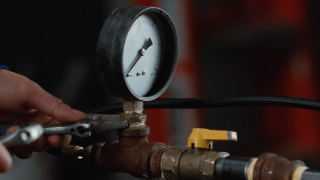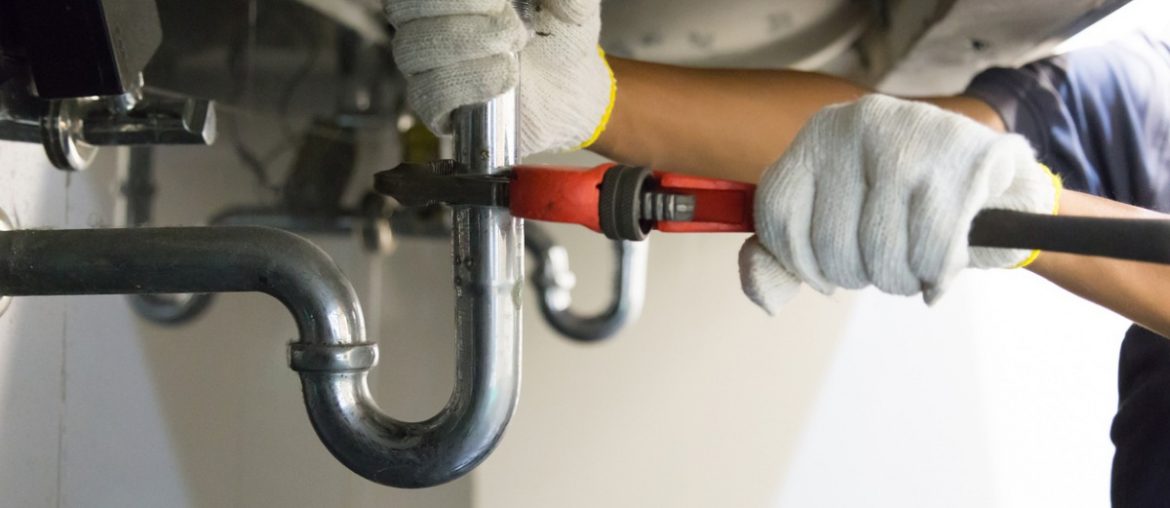Acquiring Acquainted with Home Plumbing Basics: A Beginner's Handbook
Acquiring Acquainted with Home Plumbing Basics: A Beginner's Handbook
Blog Article
We've come across this article about Plumbing Basics For Every Home: The HomeTriangle Guide down the page on the net and reckoned it made sense to write about it with you in this article.

Plumbing is a crucial element of any kind of home, responsible for providing clean water for alcohol consumption, cooking, and showering, in addition to removing wastewater safely. Comprehending the essentials of home plumbing is essential for every single property owner to make certain proper maintenance, troubleshooting, and, if required, fixings. In this newbie's overview, we'll cover the fundamental principles of home plumbing to help you end up being a lot more familiar with how it works.
Water Heater
The water heating unit is in charge of home heating water for domestic usage, consisting of bathing, cooking, and cleansing. Typical sorts of water heaters consist of tank-type water heaters, tankless (on-demand) water heaters, and heatpump hot water heater. The water heater is connected to the supply of water system and provides hot water to plumbing components as required.
Drain System
The drainage system removes wastewater from your home and lugs it away to a sewer treatment facility or septic system. It includes a network of pipelines, fittings, and fixtures that carry wastewater from plumbing components to the main sewage system line or septic system. Correct drainage is essential to avoid clogs, backups, and sewage leaks.
Ventilation System
The air flow system helps keep proper atmospheric pressure and avoid sewer gases from entering your home. Air vent pipes, also called vent heaps, expand from plumbing components to the roofing, enabling sewage system gases to get away safely outdoors. Air flow pipelines likewise allow air to enter the drain system, promoting smooth wastewater circulation and preventing suction or vacuum cleaner effects.
Water Supply System
The water supply system brings clean water right into your home from a metropolitan water resource or a personal well. It contains a main water line that attaches to your home's plumbing system, usually located underground. A water meter determines the quantity of water consumed, while a shut-off valve permits you to control the circulation of water right into your home.
Plumbing Fixtures
Plumbing components are gadgets that provide water to various parts of your home and consist of sinks, faucets, commodes, showers, tubs, and appliances such as dishwashers and cleaning makers. Each component is connected to the water system system via pipes and fittings and may have its shut-off valve for maintenance or emergencies.
Typical Plumbing Devices
Having the right devices available is vital for performing basic plumbing repair services and upkeep tasks. Common plumbing devices include adjustable wrenches, monkey wrench, pliers, pipeline cutters, hacksaws, plungers, augers (or drain serpents), and Teflon tape. Having these devices easily available can help you deal with minor plumbing issues effectively.
Fundamental Plumbing Repair Services
While some plumbing fixings might require expert help, many usual issues can be resolved with standard DIY techniques. Knowing just how to take care of a dripping faucet, unblock a drain, replace a commode flapper, or fix a leaking showerhead can conserve you money and time on plumbing repair work.
Verdict
Understanding the fundamentals of home plumbing is important for each house owner to keep a safe, useful, and effective plumbing system. By familiarizing on your own with the supply of water system, plumbing fixtures, drainage system, air flow system, common plumbing tools, and standard repair services, you can confidently resolve minor plumbing concerns and guarantee your home's plumbing system runs efficiently.
Plumbing for Beginners: A Comprehensive Guide
If you’re a beginner when it comes to plumbing, don’t worry; you’re not alone. Plumbing may seem intimidating, but with the right knowledge and a little practice, you can handle many common plumbing issues on your own. In this comprehensive guide, we will demystify the world of plumbing for beginners, providing you with the basic knowledge and skills needed to tackle common plumbing problems and even take on some DIY plumbing projects.
The Importance of Basic Plumbing Knowledge for Beginners:
First and foremost, basic plumbing knowledge gives you a solid foundation. It helps you grasp the key concepts and terminology that are essential in this field. By learning the basics, you’ll be able to build upon that knowledge and tackle more complex plumbing tasks in the future.
Having a basic understanding of plumbing also enables you to handle common issues that may arise in your home. Picture this: a leaky faucet or a clogged drain. With some basic plumbing knowledge, you’ll have the confidence to troubleshoot and fix these problems on your own. It saves you from unnecessary expenses and the hassle of waiting for a professional to arrive.
As a beginner, learning the basics of plumbing empowers you to take care of your own home. It gives you a sense of independence and self-reliance. You’ll no longer have to rely solely on professionals for every small issue that pops up. Instead, you can handle many tasks yourself, saving time and money in the process.
Remember, everyone starts as a beginner. Embrace the learning process and take small steps to expand your plumbing knowledge. There are plenty of online resources, tutorials, and even local workshops that talk about plumbing for beginners.
Essential Tools for Plumbing for Beginners
As you start your plumbing journey, having the right tools in your toolbox is crucial. Let’s explore some of the must-have tools:
Adjustable Wrench:
This versatile tool is a staple in any plumber’s toolbox. It allows you to tighten or loosen nuts and bolts of various sizes. Make sure to have an adjustable wrench with a comfortable grip.
Pipe Wrench:
A pipe wrench is specifically designed for gripping and turning pipes. It has serrated jaws that provide a strong grip, making it easier to loosen or tighten threaded pipes and fittings.
Plunger:
The plunger is a simple yet effective tool for clearing clogged drains and toilets. It creates suction when you push and pull, helping to dislodge blockages. Keep a good-quality plunger handy for those unexpected clogs.
Pipe Cutter:
When it comes to cutting pipes, a pipe cutter is your go-to tool. It creates clean, precise cuts without damaging the pipe. Look for a pipe cutter that can handle the pipe sizes you’re working with.
Hacksaw:
A hacksaw is useful for cutting through pipes, screws, and other materials. It’s a versatile tool that can handle different cutting tasks. Remember to use a blade suitable for cutting metal.
Tape Measure:
Accurate measurements are crucial in plumbing. A tape measure allows you to measure pipe lengths, distances, and dimensions accurately. Opt for a sturdy tape measure that extends a good length.
Pliers:
Pliers come in handy for various tasks, such as gripping, bending, and cutting. Slip-joint pliers with adjustable jaws are great for gripping pipes, nuts, and bolts.

As an avid reader on , I assumed sharing that excerpt was worthwhile. For those who enjoyed our blog post if you please don't forget to share it. Thanks for taking the time to read it.
Top Article Report this page